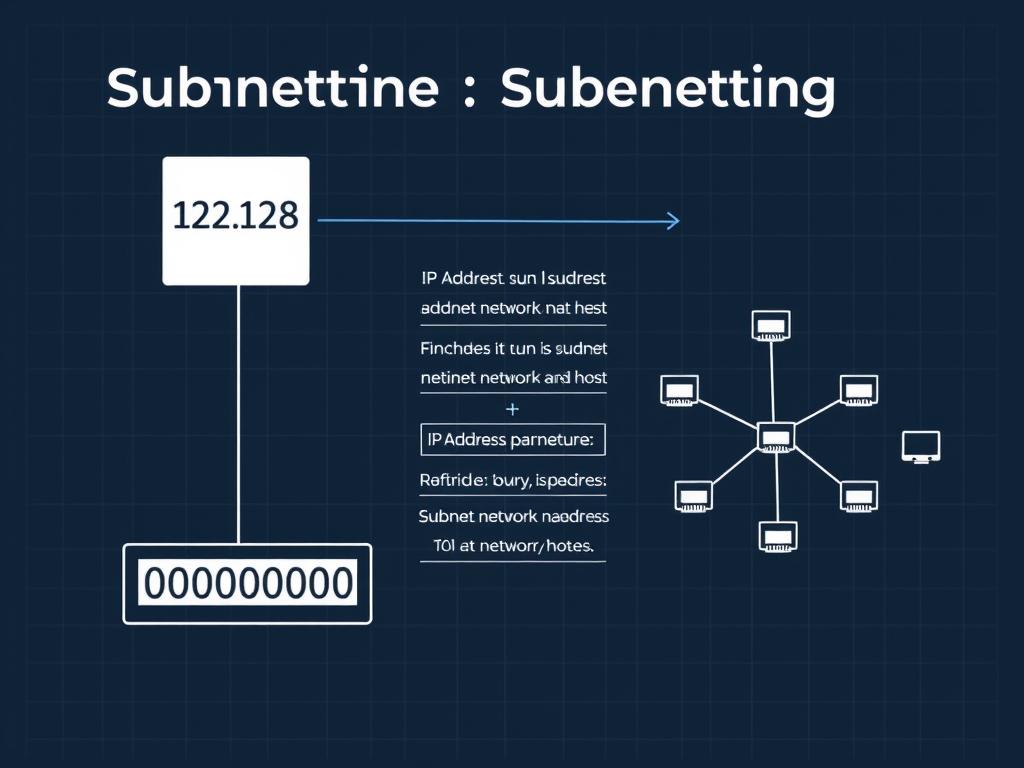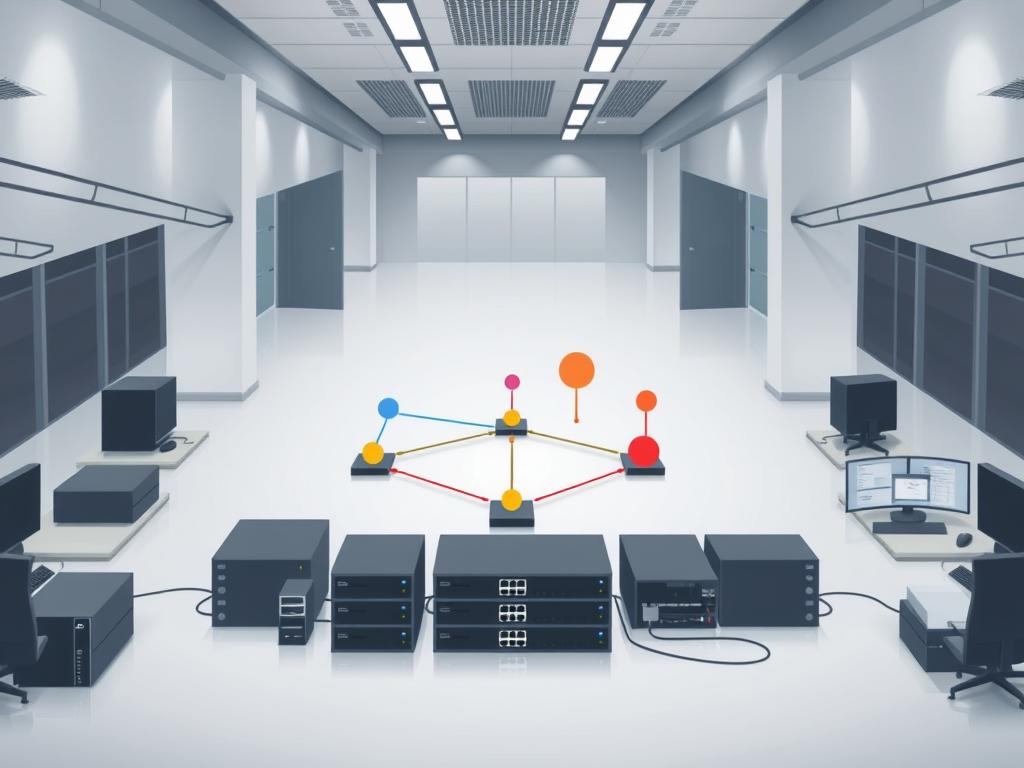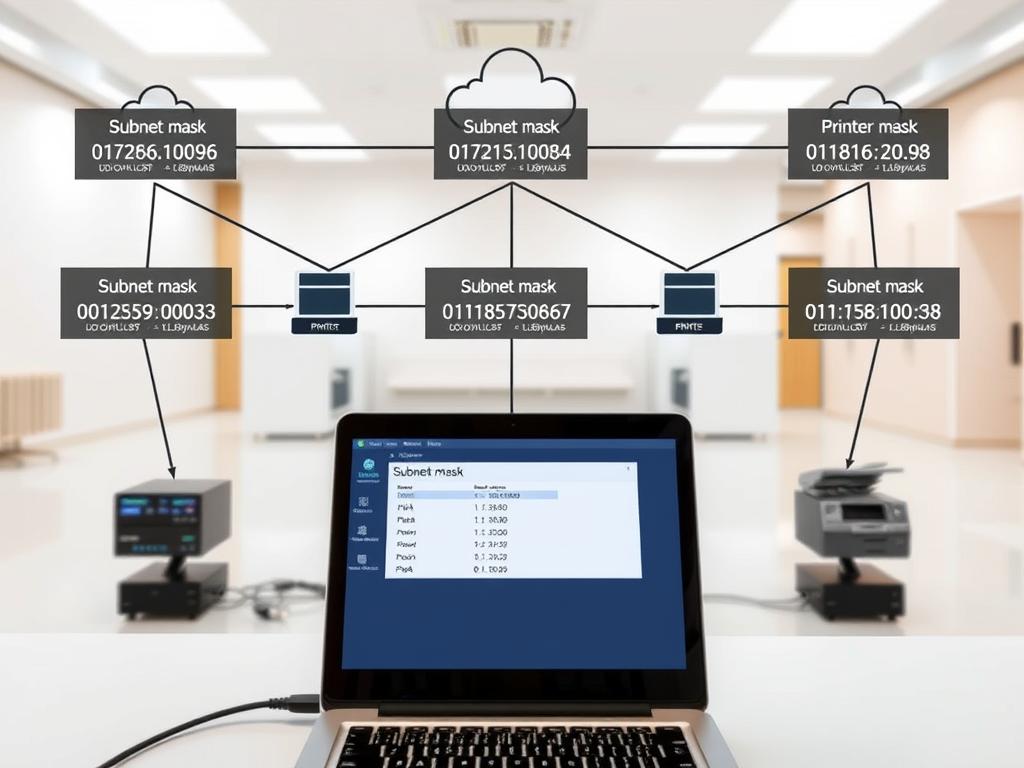Modern digital infrastructures rely on efficient data routing and resource allocation. At the core of this efficiency lies a critical tool: the subnet mask. This numerical value works alongside IP addresses to organize connected devices into logical groups, streamlining communication while reducing congestion.
With IPv4 addresses becoming scarce, segmentation strategies have grown essential. By splitting large groups of devices into smaller segments, administrators reduce wasted resources and improve traffic flow. This approach also enhances security by isolating sensitive data zones from general access points.
Effective segmentation creates clear boundaries between device clusters, much like neighborhood zoning improves city planning. These boundaries help routers prioritize data packets and prevent unnecessary cross-network chatter. The result? Faster response times and fewer bottlenecks in daily operations.
Key Takeaways
- Segments large networks into manageable units for better traffic control
- Maximizes IPv4 address usage through strategic allocation
- Reduces broadcast domains to minimize network congestion
- Enables targeted security policies for different device groups
- Simplifies troubleshooting through logical organization
- Supports scalable infrastructure growth
Introduction to Subnet Masking
Behind every efficient network lies a hidden organizer – a numeric blueprint that dictates how information flows. This unsung hero operates through binary patterns, creating order in digital chaos.
Defining Subnet Mask and Its Role
A subnet mask acts like a digital sieve, separating IP addresses into two critical parts. The first identifies group membership (network), while the second pinpoints specific members (host). This 32-bit code works silently, enabling routers to instantly recognize where data belongs.
Network architects rely on these masks to design logical hierarchies. “Without proper segmentation,” notes a Cisco certification guide, “even robust hardware becomes overwhelmed by unnecessary traffic.” This separation allows precise control over communication paths and resource distribution.
Why It Matters in Modern Networking
Contemporary infrastructure demands smarter data handling. Subnet masks reduce broadcast storms by limiting chatter to relevant groups. They enable:
- Targeted security protocols for sensitive areas
- Efficient bandwidth allocation across departments
- Simplified troubleshooting through logical grouping
As wireless connections multiply, proper mask configuration prevents IP conflicts and optimizes performance. Administrators can scale operations without overhauling entire systems – a crucial advantage in evolving tech landscapes.
Understanding the Basics of Subnetting
Network organization begins with structured segmentation. Dividing extensive IP ranges into logical clusters allows precise traffic management and resource optimization. This method transforms chaotic digital spaces into ordered communication channels.

Core Principles of Network Segmentation
Subnetting creates distinct zones within a network, each operating as an independent unit. These segments share a parent network but maintain unique identifiers through numeric boundaries. For example, a corporate campus might separate finance teams from marketing departments using this strategy.
Three critical elements define this process:
- Address ranges: Specific IP sequences assigned to each group
- Mask configurations: Binary filters determining group membership
- Operational scope: Defined communication permissions within zones
Devices within the same subnet exchange data directly, bypassing unnecessary routing steps. A warehouse inventory system could communicate with local printers instantly, while external requests route through security checkpoints first.
Proper implementation reduces broadcast traffic by 40-60% in typical setups. Network architects leverage these logical divisions to isolate performance issues and apply tailored security protocols. The technique forms the backbone of scalable infrastructure design, adapting seamlessly as organizations grow.
what is subnet masking in computer network
Digital infrastructure thrives on precise organization, where subnet masks serve as the backbone of logical divisions. These numeric codes determine which parts of an IP address represent group membership versus individual device identification. Through binary pattern matching, they create virtual boundaries that routers use to make instant routing decisions.
Consider a university campus managing thousands of connected devices. The IT team assigns different mask values to academic departments and administrative offices. This separation allows library computers to share printers locally while keeping financial records secure in a separate zone. Broadcast traffic reduces significantly as devices only communicate within their designated groups.
Three primary advantages emerge from proper implementation:
- Optimized IP address distribution across departments
- Granular security controls for sensitive data zones
- Reduced latency through localized communication paths
Network engineers leverage these filters to align digital architecture with physical organizational structures. A hospital might isolate patient monitoring systems from guest Wi-Fi using distinct subnet configurations. This strategy maintains critical medical data flows while preventing unauthorized access attempts.
As networking demands evolve, these masks enable scalable growth without infrastructure overhauls. New branches or departments integrate seamlessly through calculated mask adjustments rather than complete redesigns. This flexibility makes subnet configuration essential for modern enterprise operations and cloud-based systems alike.
How a Subnet Mask Functions in IP Networks
Every digital device needs an organizational system to distinguish group membership from individual identity. This separation occurs through binary patterns that act as traffic directors for data packets.

Network and Host Partitioning Explained
A 32-bit numerical filter divides IP addresses into two parts: the network address (group identifier) and host address (device identifier). Imagine a mailroom sorting system where:
- First three digits define the building zone
- Last digit specifies the exact office
This structure allows routers to quickly identify destination groups without examining every device detail. The network address acts like a neighborhood map, while the host address pinpoints specific houses.
The Bitwise AND Operation in Action
Devices perform this mathematical operation to extract network information. Here’s how it works:
- Convert IP address and mask to binary
- Compare corresponding bits using AND logic
- 1 AND 1 = 1 (network portion)
- All other combinations = 0 (host portion)
For example, an IP ending with .45 and mask 255.255.255.0 would show the last number as the host address. Routers use these results to determine whether to keep traffic local or route it externally.
The Importance of Subnet Masking in Network Configuration
Effective network management requires strategic organization of digital resources. Logical segmentation creates optimized pathways for data while establishing protective barriers between sensitive areas. This dual benefit structure addresses two critical needs: operational speed and risk mitigation.

| Efficiency Benefits | Security Benefits |
|---|---|
| 40-60% reduction in broadcast domains | Isolated zones for sensitive data |
| Localized device communication | Custom access controls per segment |
| Bandwidth optimization | Reduced lateral threat movement |
Improved Network Efficiency
Broadcast traffic shrinks dramatically when confined to specific groups. Localized communication between devices in the same segment eliminates unnecessary routing steps. A manufacturing plant’s assembly line sensors, for example, share data directly without flooding the entire system.
“Proper segmentation cuts network chatter by half while accelerating response times,”
Enhanced Data Security
Separate zones act as digital containment chambers. Financial databases can operate behind stricter firewalls than guest Wi-Fi networks. This isolation prevents unauthorized access attempts from compromising critical assets.
Three-layer protection emerges through segmentation:
- Physical separation of sensitive devices
- Custom encryption protocols per zone
- Reduced attack surface area
Combined efficiency and security improvements create networks that perform better while resisting modern cyber threats. Administrators gain precise control over data flows, adapting configurations as organizational needs evolve.
Subnet Mask Calculations and Classful IP Addressing
Digital networks categorize devices using standardized grouping systems. Classful addressing divides IPv4 addresses into distinct categories based on size requirements. This framework simplifies initial network design while providing clear boundaries for device capacity.

Understanding IP Address Classes
Three primary categories govern traditional IPv4 allocations:
- Class A: 1.0.0.0 – 126.255.255.255 (16 million hosts per network)
- Class B: 128.0.0.0 – 191.255.255.255 (65,534 hosts per network)
- Class C: 192.0.0.0 – 223.255.255.255 (254 hosts per network)
Larger organizations typically use Class A allocations, while smaller businesses benefit from Class C’s compact structure. The default mask for each class determines how many addresses remain available for devices after network identification.
Example: Subnet Mask 255.255.255.0 Explained
Commonly called a “/24 mask”, this configuration reserves the first three IP segments for network identification. A typical Class C setup might appear as:
“192.168.1.45 with 255.255.255.0 = Network 192.168.1.0, Host .45”
This mask allows 254 usable addresses per network – ideal for retail stores or branch offices. Administrators calculate available hosts by subtracting two addresses (network and broadcast) from the total pool. For Class C networks: 256 total addresses – 2 reserved = 254 active devices.
Practical Examples of Subnet Masking in Action

Corporate networks mirror organizational charts through strategic digital divisions. A manufacturing firm with 500 employees might segment operations using three distinct zones:
- Production floor sensors (192.168.1.0/24)
- Office workstations (192.168.2.0/24)
- Executive systems (192.168.3.0/24)
Real-World Departmental Segmentation
When a device with IP 192.168.1.10 attempts communication, its 255.255.255.0 mask defines the first three number groups as the local network. Packets destined for 192.168.1.45 stay within the production zone, bypassing routers. Traffic heading to 192.168.2.30 automatically routes through gateways.
This configuration delivers three operational benefits:
- Isolated broadcast domains reduce unnecessary data traffic
- Granular firewall rules protect intellectual property
- Simplified maintenance through logical grouping
| Same Subnet | Different Subnet |
|---|---|
| Direct device-to-device communication | Gateway routing required |
| No external hardware involvement | Firewall policies enforced |
| Millisecond response times | Added security checks |
Network administrators at retail chains use similar strategies to separate POS systems from customer Wi-Fi. Each subnet operates like a digital department store aisle – products remain organized, and shoppers find items faster.
“Proper segmentation cuts troubleshooting time by 30% while maintaining airtight security perimeters.”
Benefits
Organizational success in tech-driven environments hinges on optimized network architectures. Strategic segmentation through numeric filters boosts operational efficiency while maintaining robust security protocols. These configurations act as traffic directors, channeling data through designated pathways for maximum throughput.
Enhanced protection ranks among the top advantages. Sensitive zones like healthcare databases or financial systems operate behind encrypted barriers. Unauthorized access attempts hit digital dead-ends, while legitimate communications flow unimpeded.
Scalability emerges as another critical benefit. Administrators expand operations by adding logical groups rather than physical hardware. New departments integrate seamlessly, avoiding IP conflicts and infrastructure overhauls.
Resource allocation becomes precise and adaptable. Bandwidth prioritization ensures mission-critical applications never compete with general traffic. This granular control reduces congestion while improving response times across all connected devices.
Properly implemented segmentation creates future-ready frameworks. Organizations grow securely, efficiently, and cost-effectively – essential traits in today’s rapidly evolving digital landscape.




